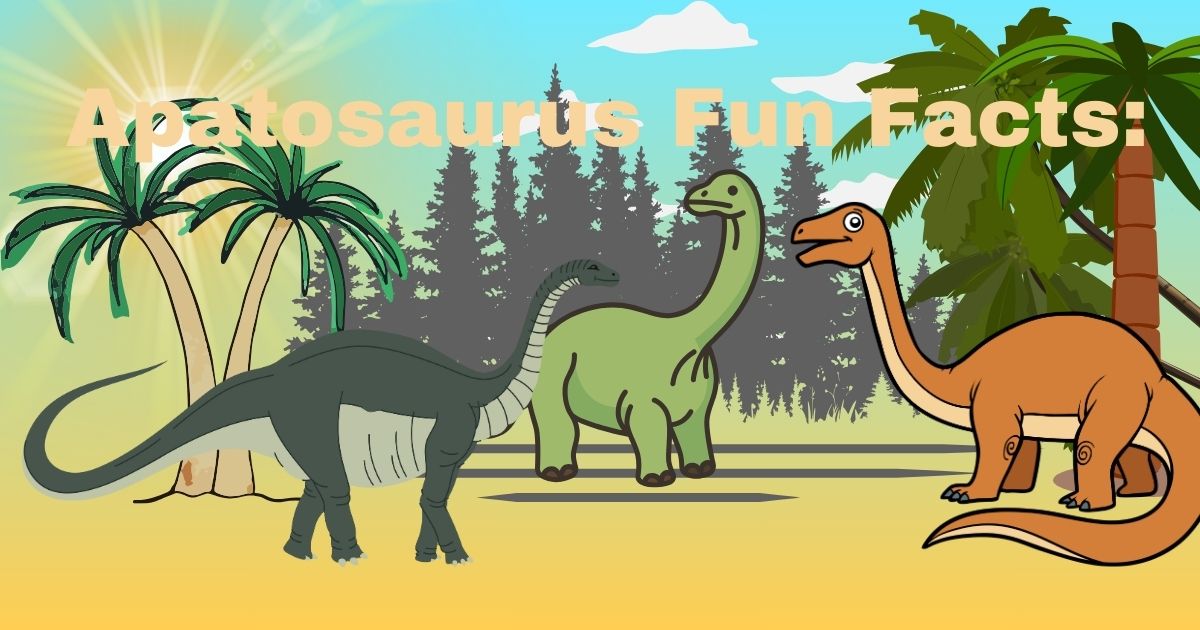Apatosaurus Fun Facts: Exploring the Giants of the Jurassic

Introduction
Apatosaurus, regularly referred to as the “tender mammoth” of the Jurassic period, has captured the creativity of individuals around the world for ages. These mighty animals roamed the soil in their millions long ago, leaving behind a legacy that fascinates researchers and devotees alike. In this article, we will explore some interesting Apatosaurus fun facts that shed light on their unusual existence.
What is Apatosaurus? Read More…
What is Apatosaurus?
Apatosaurus: The Titan of the Jurassic
Apatosaurus, which means “hard reptile”, was a huge sauropod dinosaur that lived around 150 million years ago during the late Jurassic period. Once a niche for the family Diplodocidae, these herbivorous mammoths roamed the great floodplains of North America, which was incredibly diverse from its current landscape.
Physical characteristics
Revelation of Apatosaurus being celestial
Size: Apatosaurus was one of the largest living creatures ever known, measuring up to 75 feet in length and weighing nearly 20 tons. Their long necks and tails, as well as their massive bodies, contributed to their enormous stature.
Long Neck: Apatosaurus necks could reach up to 30 feet in length, enabling them to reach tall plants on the ground. This adjustment allowed them to feed on a variety of plants, maintaining their enormous bodies.
Whip-like Tail: Apatosaurus had a long, whip-like tail that could be used as a stealthy weapon against predators. The sheer drive emanating from their tails is indeed a stumbling block for even the fiercest of opponents.
Habitat and behavior
Investigate the world of Apatosaurus
Floodplain Tenants: Apatosaurus had lush, forested floodplains abundant in vegetation. These boundaries provided ample sources of nutrients for these herbivores, allowing them to thrive.
Herding Behavior: Fossils prove that Apatosaurus lived in groups, which likely provided reassurance against predators and encouraged mating ceremonies. Their social structure may have been modeled after modern day elephants.
Migration: Some researchers speculate that Apatosaurus attempted regular movements in search of food and water, comparable to many modern herbivores. This practice would have allowed them to misuse certain assets throughout the year.
Diet and nutrition habits
What did Apatosaurus eat?
Herbivore: Apatosaurus was a complete herbivore, subsisting primarily on a diet consisting of plants, conifers, and other primitive plants. Their gastrointestinal expert framework allowed them to extract supplements from intense, tough plants.
High Browsing: With their long necks, Apatosaurus could reach plants up to 30 feet off the ground. This adjustment allowed them to access a variety of plant species, guaranteeing an abundant supply of nutrients.
Gastrointestinal Efficiency: Despite their large size, Apatosaurus’ heads and jaws are generally small. In any case, their strong abdominal frameworks were well equipped to efficiently process large amounts of plant matter.
What is the Scientific Name for Apatosaurus? Read More…
Paleontological discoveries.
Unraveling the Apatosaurus Riddles
The first revelation: Apatosaurus fossils were first discovered in 1877 by paleontologist Othniel Charles Bogue in Colorado, who were in the same state. Since then, various specimens have been uncovered, providing important pieces of knowledge into the lifestyle and behavior of these ancient giants.
Bone Structure: Examination of Apatosaurus fossils has uncovered intriguing points of interest about their skeletal structure, calculating adjustments to support their enormous bodies and effective locomotion.
Trackways: Fossilized trackways of Apatosaurus deposits have been found in various localities, advertising clues around their developmental design and behavior. These trackways provide almost profitable data on the life of these ancient creatures.
How Do We Know About Apatosaurus’s Behavior and Lifestyle? Read More…
FAQs For Apatosaurus Fun Facts: Exploring the Giants of the Jurassic
1. How do we know what Apatosaurus looked like?
Scientists use a combination of fossil evidence, comparative living systems, and computer simulations to recreate the appearance of Apatosaurus and other dinosaurs.
2. Did Apatosaurus have a specialized predator?
Although Apatosaurus was a large and impressive herbivore, it likely faced prey from carnivorous dinosaurs such as Allosaurus.
3. Why did Apatosaurus have such long necks?
Apatosaurus probably grew long necks to reach plants high on the ground, allowing them to reach food sources that were out of reach for other herbivores.
4. How fast did Apatosaurus move?
Although the exact speed of Apatosaurus is unclear, researchers estimate that it was able to walk at a direct speed comparable to that of modern-day elephants.
5. Are there any living relatives of Apatosaurus?
Apatosaurus has a place to a gather of dinosaurs known as sauropods, which are far off relatives of cutting edge feathered creatures and reptiles.
Brontosaurus vs Brachiosaurus vs Apatosaurus: Read More…
Conclusion
Apatosaurus, with its colossal estimate and tender mien, proceeds to charm our creative energy. Through paleontological revelations and logical investigate, we pick up a more profound understanding of these magnificent animals that once wandered the Soil. As we reveal more Apatosaurus fun truths, we disentangle the riddles of the antiquated world and pick up experiences into the advancement of life on our planet.
In conclusion, Apatosaurus stands as a confirmation to the awe-inspiring differences of life that has existed all through Earth’s history, reminding us of the ponders holding up to be found inside the fossil record.